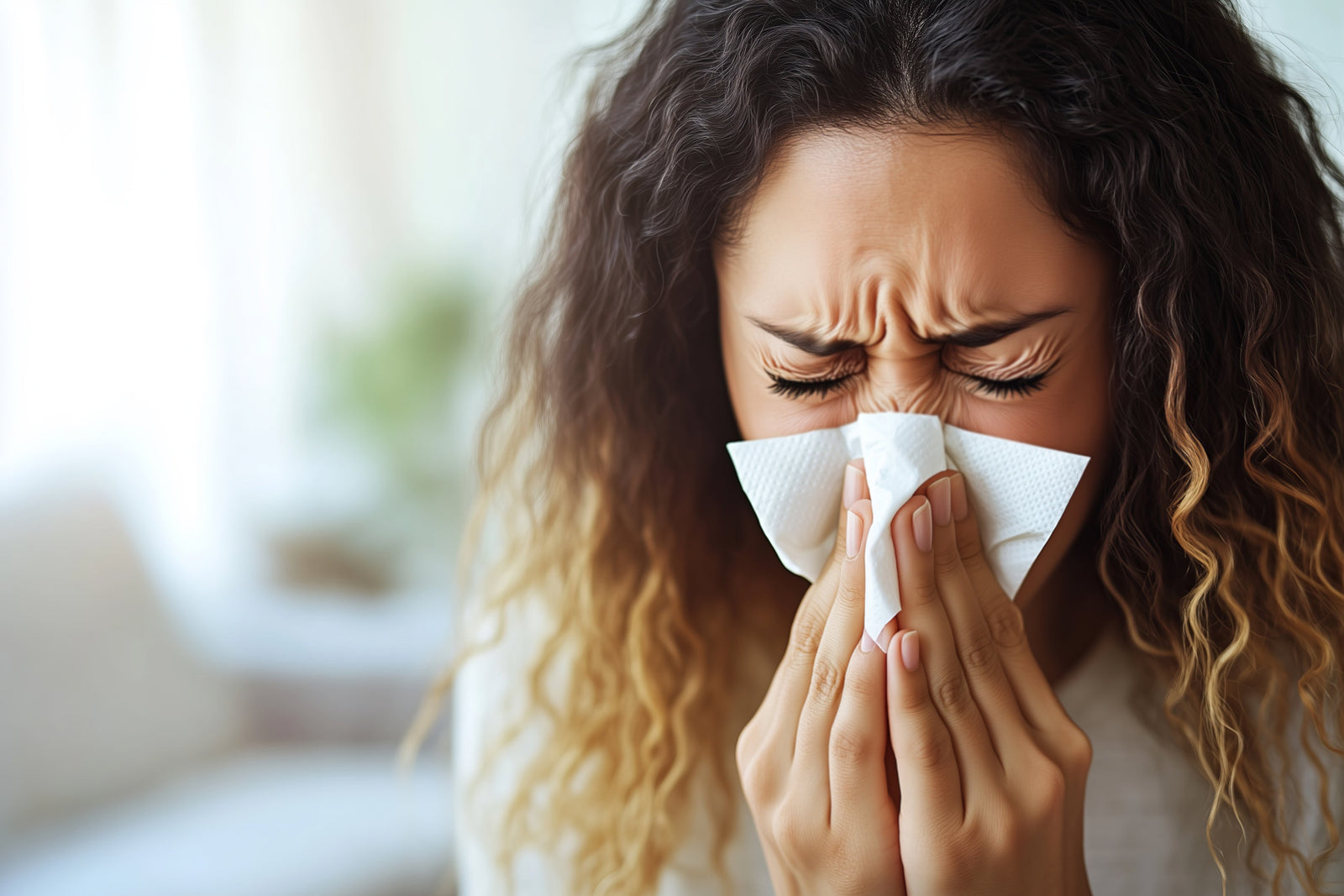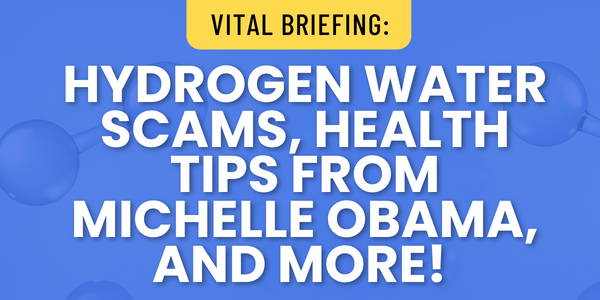
We are exposed to many chemicals and toxins on a daily basis, and we often fail to take a moment to realize how these substances affect our bodies.
The thing is:
Some types of chemicals that are prevalent in the environment we live in today can disrupt the endocrine system, causing a number of adverse effects. Endocrine disruptors can be found in products most of us use every day.
What kind of products am I talking about?
Well, long story short, a lot of them.
Bottles.
Toys.
Recent EPA research suggests that even your floss cannot be trusted.
In this post, you will learn:
- what are some of the common chemicals that many people are exposed to on a daily basis;
- how these chemicals disrupt the endocrine system;
- what you can do to limit your exposure to them.
But first of all...
What IS the Endocrine System?
There are many hormones that play critical roles in the human body, and a number of different glands that produce these substances. The endocrine system is a complex network responsible for the regulation and production of various hormones that helps all systems function properly.

Image source: gfycat.com
Among the chemicals that can disrupt the endocrine system, there are three that I’d like to talk about today.
They are as follows:
1. Bisphenol A
Bisphenol A, more commonly known as BPA, is a harmful chemical that is present in many of the plastic products we use every day - including some of the food packagings.
Bisphenol A is also found in dental materials, dust, healthcare equipment, plastic bottles, and more. It is also commonly present in children’s toys, which means that young ones can also be exposed.
When exposed to Bisphenol A, the chemical is converted into a compound known as bisphenol A glucuronide. This compound, in turn, interacts with estrogen receptors in the body.
This can lead to several adverse effects that may ultimately impact fertility, as well as increase the risk of hormone-dependent tumors.

When buying products made from plastic, it is always a good idea to look for options that are labeled as “BPA-free”.
There are also many toys available on the market that also carry this particular label.
2. Phthalates
Similar to BPA, phthalates are commonly used in the process of manufacturing plastic products to improve durability while also reducing the flexibility of the product.
The main issue with these chemicals is the fact that they can enter the body in different ways, including through skin contact, due to dermal absorption. Ingestion, parenteral administration, and inhalation are other ways that we are exposed to phthalates.
Studies have shown that exposure to phthalates causes an increase in the risk of developing allergic diseases, such as eczema and asthma, in children. When small children are exposed to these chemicals, their physical development may also be adversely affected.
Phthalates are a key part of the production of plastics and cosmetic goods making them very difficult to completely avoid.
However:
The number of phthalate-free options for cosmetics and beauty products is growing. If your favored beauty product contains phthalates, it might be time to consider phthalate-free alternatives.
Limit your use of plastic food containers and bottles and don't use them to reheat food.

When buying plastic products, avoid those with the recycling codes three or seven listed.
3. Perfluorochemicals
Perfluorochemicals is a term that refers to a group of chemicals generally used to add a fluoropolymer coating to certain products, which helps to make them resistant to water, oil, grease, and even heat.
While this is a beneficial process, exposure to perfluorochemicals can be harmful to the human body.
The worst thing about perfluorochemicals?
The fact that they sometimes leak into the water.
You may also be exposed to these chemicals when your food becomes contaminated. Furthermore, when you use products that are coated with these chemicals (think non-stick pans), you further increase your exposure.
The effect that perfluorochemicals have on the endocrine system may lead to issues with the body's growth, as well as overall development. Hormone disruptions caused by the exposure to perfluorochemicals have also shown to potentially have adverse effects on fertility in both men and women.
To reduce your exposure to these chemicals, consider buying products that do not come with features like "water resistance," "stain resistance," and "heat resistance" when these features are not crucial.

Cooking pots and pans that have a nonstick coating may also expose you to these chemicals, so it's worth checking the label before you set out to buy one.
4. Radon
Decaying uranium produces radon: a radioactive gas that has no flavor, smell, and is invisible to the naked eye.
High levels of radon are typically found in mines and water treatment facilities, but radon can be found practically anywhere on the planet.
There’s a great chance that your basement, or any underground room for that matter, is exposed to radon wherever uranium is found.

If you didn’t know, radon is the second leading cause of lung cancer in the United States, second only to cigarettes.
The US Surgeon General released an important warning in 2005 about the hidden dangers of radon and that more than 20,000 people die to radon-related lung cancer every year. If you live in the US and are worried that your home is built atop hidden piles of uranium, feel free to consult with the EPA to find out which regions are contaminated by radon and what you can do about it.
Eradicating traces of radon is impossible if you live in one of the radon-heavy zones, but there are several things you can do to reduce the risk or level of exposure to the gas.
The first thing to do is check whether your home is actually at risk of radon exposure by getting it professionally checked. They will most likely look at your basement, water well (if you have one), and recommend sealing your home’s walls and floors to prevent leakage.
5. Brominated Flame Retardants
BRFs are used to reduce the flammability of materials like plastic and fibers. They’re found virtually everywhere – furniture, electronics, dust, and (like Bisphenol A) even your children’s toys!

The most widely used BRF compounds are TBBPA, HBCD, and numerous mixtures of PBDE, though production and use of Penta- and Octa-PBDEs have been discontinued due to an increasing amount of criticism, and all types have been eradicated from European countries.
A warning for our readers in the States: once you’ve come in contact with any type of BRF, you and whatever clothes you have on are contaminated. In fact, copious amounts of this endocrine-disrupting chemical have been found in breast milk.
BRFs get stored in body fat, and after enough time, they can rise to alarmingly high levels that lead to a disruption in the endocrine and reproductive systems. Some have also suggested that BRF exposure is closely associated with neurobehavioral disorders and cancer.
The sad truth is that children are exposed to BRFs more so than adults; when scooting on carpets, playing with toys, or climbing furniture, they’re absorbing the chemical compound.
There is very little government regulation regarding the usage of BRFs in commercial products, at least in the US, so you will need to be proactive in your fight against the household toxin.
Consider investing in a vacuum cleaner and/or air purifier that uses filters which can trap BRF dust and any particle as small as 0.3 microns in width. You might also want to avoid purchasing consumer products that have BRFs, especially if you or a child will be in constant contact with the product.
6. Pesticides
Here’s something everyone has heard of before: the harmful effects of pesticides.
Roughly 70% of produce sold in the States contains trace amounts of pesticide residue. If you regularly purchase fruits and vegetables from well-known food chains, chances are you’ve consumed an immeasurable amount of pesticide over time.

Awareness of the ill effects pesticides causes has risen over the last twenty years. This is mainly due to a series of public policy changes that have led to safer practices involving fewer and less pesticide.
The EPA has claimed that improvements in pesticide technology and studies have reduced the health risks of pesticides.
However, we shouldn’t start celebrating just yet.
Excessive exposure to “safer” pesticides may still pose health risks. Cases of prostate and lung cancer have risen due to pesticide exposure. Even asthma and muscular degeneration have been associated with consuming high levels of certain pesticides.
The good news is that removing pesticide-laden produce from our diets is entirely possible!
Though pricier, organic options don’t raise nearly as many red flags as their conventional counterparts. However, if you can’t afford the more expensive vegetables, you can limit your exposure to one certain type of pesticide by introducing a variety of different greens to your diet.
Also, if organic produce isn’t available to you, either due to a lack of availability or price issues, then take some time to wash, scrub, and/or peel your produce will remove most of the chemicals.
7. Mercury
The toxic properties of mercury have been well-documented.
Consuming mercury affects our nervous systems, which in turn impairs hearing and vision. For children, a tinier amount of mercury is enough to poison them and cause permanent brain damage. Although heavy government regulation surrounds the use and disposal of mercury, one may still become easily exposed to the toxic metal.
One way mercury may find its way into our homes is through thermostats. Even though mercury thermostats have become increasingly rarer in the recent past, you may still find remnants of these ancient artifacts laying around.
More common mercury-laced products include fluorescent light bulbs and batteries which, if disposed of carelessly, means putting you and your loved ones at risk.
Here’s where things get a lot more worrisome:
If you enjoy eating fish, then you’re actively inserting trace amounts of mercury into your system.

When mercury is dumped into a body of water, bacteria convert it into methylmercury which passes through a fish’s gills and becomes embedded throughout its body.
Generally speaking, the larger the fish, the more mercury it contains per gram of meat. Rob Shmerling of Harvard Health Publications suggests eating no more than two servings of fish weekly.
How To Completely Avoid Hormone-Disrupting Chemicals?
Here’s the truth of the matter:
With the right information and a little effort, we can lower our levels of exposure to these harmful chemicals and avoid some of the negative health effects.
However:
With the ubiquity of plastics, there’s virtually no place in the world completely free from synthetic chemicals and harmful toxins.
Most of them aren’t immediately dangerous in the short term. However, prolonged exposure to toxic chemicals can all promote the accumulation of free radicals in the body, leading to oxidative stress - the root cause of most chronic disease.
If you’re worried about the dangers of hormone-disrupting chemicals, consider trying a unique antioxidant supplement - Molecular Hydrogen - to mitigate free radical damage and reduce oxidative stress.
Support your body at the cellular level with Molecular Hydrogen tablets, proven to neutralize harmful free radicals and boost the internal antioxidant system, allowing the body to maintain optimal functionality and achieve balance!




Leave a comment (all fields required)